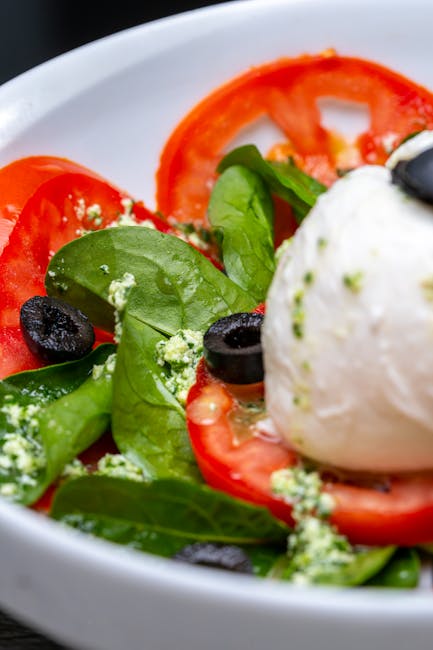Can I Substitute Olive Oil For Vegetable Oil? A Comprehensive Guide
The pantry staple debate rages on: olive oil versus vegetable oil. Both are common cooking oils, but their distinct characteristics make them suitable for different purposes. This comprehensive guide delves into the nuances of each oil, exploring their flavor profiles, nutritional content, smoke points, and suitability for various cooking methods. We’ll answer the burning question: can you substitute olive oil for vegetable oil, and when should you do so (or not)?
Understanding Olive Oil
Olive oil, extracted from olives, is a powerhouse of monounsaturated fats, particularly oleic acid. This is the same beneficial fat found in avocados and nuts, linked to improved heart health and reduced risk of chronic diseases. However, not all olive oil is created equal. The quality and flavor of olive oil are determined by several factors, including the olive variety, harvesting methods, and extraction processes.
Types of Olive Oil
- Extra Virgin Olive Oil: This is the highest quality olive oil, boasting a low acidity level (less than 0.8%) and a robust, fruity flavor. It’s ideal for drizzling over salads, finishing dishes, and using in low-heat cooking methods.
- Virgin Olive Oil: Slightly less refined than extra virgin, virgin olive oil still retains a good flavor and is suitable for similar culinary applications.
- Refined Olive Oil: This oil undergoes more processing, resulting in a milder flavor and higher smoke point. It’s often blended with virgin olive oil to create a more versatile product.
- Pure Olive Oil: A blend of refined and virgin olive oil.
Nutritional Profile of Olive Oil
Olive oil is rich in antioxidants, particularly vitamin E and polyphenols, which contribute to its health benefits. It’s also a good source of healthy fats, essential for various bodily functions.
Understanding Vegetable Oil
Vegetable oil is a general term encompassing a variety of oils extracted from different plants, such as soybeans, corn, canola, sunflower, and safflower. The exact composition of vegetable oil varies depending on the source, but it typically contains a mix of saturated, monounsaturated, and polyunsaturated fats. Many commercially available vegetable oils are highly refined, resulting in a neutral flavor and high smoke point.
Types of Vegetable Oil
- Soybean Oil: Widely used in cooking and food processing, soybean oil has a neutral flavor and high smoke point.
- Canola Oil: Known for its low saturated fat content and high levels of monounsaturated fats, canola oil is a popular choice for healthy cooking.
- Corn Oil: Another versatile oil with a neutral flavor and high smoke point.
- Sunflower Oil: Rich in vitamin E and polyunsaturated fats.
Nutritional Profile of Vegetable Oil
The nutritional profile of vegetable oil varies depending on the source. While some offer beneficial fatty acids, others may be higher in saturated fats. Many commercially available vegetable oils are also highly processed, potentially removing some beneficial components.

Olive Oil vs. Vegetable Oil: Key Differences
The primary differences between olive oil and vegetable oil lie in their flavor, smoke point, and nutritional composition. Olive oil boasts a distinctive fruity flavor, while vegetable oil typically has a neutral taste. Olive oil’s smoke point is lower than that of most vegetable oils, making it less suitable for high-heat cooking methods like deep frying.
Smoke Point Comparison
The smoke point is the temperature at which an oil begins to break down and produce harmful compounds. Extra virgin olive oil has a relatively low smoke point (around 375°F), while refined olive oil and most vegetable oils have higher smoke points (ranging from 400°F to 450°F or higher). Exceeding the smoke point can compromise the taste and nutritional value of the oil and potentially produce harmful substances.
Can You Substitute Olive Oil for Vegetable Oil?
The answer is: it depends. Substituting olive oil for vegetable oil is possible, but it’s crucial to consider the cooking method and the type of olive oil you’re using.

When Olive Oil is a Good Substitute
- Baking: In recipes that call for a small amount of oil, substituting a mild olive oil like refined olive oil can work. However, the strong flavor of extra virgin olive oil might overpower other ingredients.
- Salad Dressings: Olive oil is an excellent choice for salad dressings, adding a rich flavor and healthy fats.
- Low-heat Cooking: Extra virgin olive oil is ideal for sautéing vegetables, making sauces, or drizzling over finished dishes.
When Olive Oil is NOT a Good Substitute
- High-heat Cooking: Using extra virgin olive oil for deep frying or high-heat searing is not recommended due to its low smoke point. The oil will break down, producing harmful compounds and imparting a bitter taste to the food.
- Recipes with Delicate Flavors: The robust flavor of extra virgin olive oil might clash with delicate ingredients in certain recipes.
Choosing the Right Oil for Your Cooking Needs
Ultimately, the best oil for your recipe depends on the cooking method and the desired flavor profile. Consider the following factors:

- Cooking Temperature: Choose oils with higher smoke points for high-heat cooking methods.
- Flavor Profile: Opt for neutral-flavored oils when you want the other ingredients to shine, and choose olive oil when you want to add a fruity flavor note.
- Health Benefits: Consider the nutritional composition of the oil, focusing on healthy fats and antioxidants.
Conclusion
While you can substitute olive oil for vegetable oil in certain situations, it’s not always a one-to-one swap. Understanding the differences between olive oil and vegetable oil, their respective smoke points, and flavor profiles will help you make informed choices and achieve the best results in your cooking. Remember to always prioritize the quality of your ingredients and choose oils that complement your recipes.

